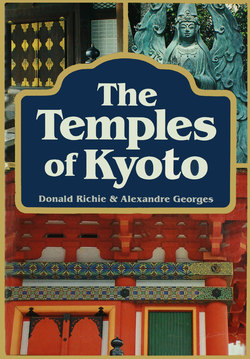Читать книгу Temples of Kyoto - Donald Richie - Страница 12
На сайте Литреса книга снята с продажи.
Оглавление| Ishiyama-dera |
The old Japanese guidebooks to the temples of Kyoto make much of the masculine nature of Enryaku-ji. There were many reasons for doing so but among them may have been a desire to celebrate the perceived femininity of Ishiyama-dera.
This temple is not on the stern heights but rather on a gentle eminence along the Seta River above Lake Biwa. Open, easy of access and pleasant of aspect, Ishiyama-dera also has a long history of women visitors.
The author of the Kagero Nikki, known to history only as "the mother of Fujiwara no Michitsuna," took refuge here during troubled times. The Lady Murasaki is said to have penned part of The Tale of Genji while staying here.
The date of this occurrence is known (the night of the full moon, August, 1004), the room is identified (right off the hondo), and in a way she is still there. In her many-layered robes (the outer one purple—murasaki), brush in hand, a blank page on the desk, sits a mannequin with long hair and whitened face purporting to be the famous author.
She has just paused in her inspiration and is looking at us—peering into the future. She seems to be pondering a narrative problem—it appears to be a grave moment. Indeed, it may be because, according to the Noh drama Genji Kuyo, the Lady Murasaki was actually an incarnation of the local deity, the Ishiyama Kannon. She had written her novel solely, you see, in order to teach the Buddhist truth that the world is but a dream.
Later, many other women also came. The hero of Saikaku's The Life of an Amorous Man was here enjoying the view over Lake Biwa, and overheard a most attractive lady explaining to a companion that this was the very spot where The Tale of Genji was composed. Intrigued, he drew closer and, in so doing, caught the lady's sleeve on his sword guard. Or she caught his. In either event they became lovers.
Others to take advantage of the place included a number of women who over the centuries found in Ishiyama-dera a place of refuge. These remain unchronicled but their number is suggested by the popularity of the "concealed Buddha." It was here that women came to pray for easy childbirth, for a good marriage, and for deliverance from a marriage which had turned out bad. A presumed gift of the famous Prince Shotoku, this "invisible" Buddha gave hope to many generations of women and is, in fact, still much visited.
